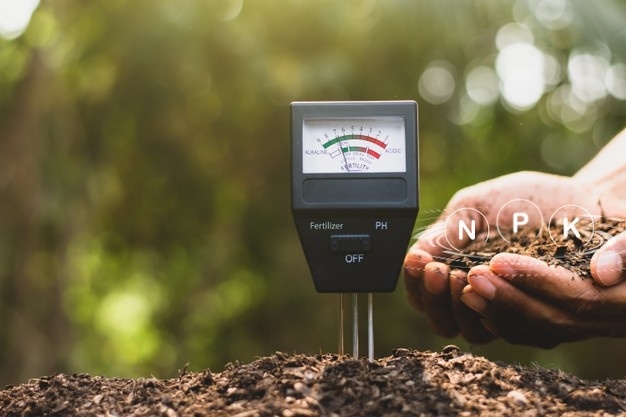pH – the potential of hydrogen, pH is the measure of acidity or basicity of substance. It is expressed by a positive number ranging from 0 to 14, where 7 indicates a neutral value, that is neither acidic nor basic. pH value is a logarithm scale means if one soil has 5 pH value and other soil have 6 pH value then 5 pH value soil is 10 times more acidic than 6 pH value soil. When the pH value of a substance is below 7 then it is acidic and if the pH value of a substance is above 7 then it is basic. The pH value of ideal soil is usually close to neutral, it ranges between 6.5 to 7.5. If we don’t maintain this pH, most plants are adversely affected. In this article, we’ll focus on the Best Soil pH Tester in 2021 – Buying Guide and Reviews.
Characteristics of a Soil pH Tester
The pH of rainwater is 5.6, which means the rainwater is slightly acidic, this slightly acidic nature of rainwater doesn’t really cause any damage but in past few years, many harmful substances release into the atmosphere addition of these substances drops the pH of rainwater, in some cities the proportion of harmful substances is so high that it drops the pH level of rainwater to a much lower level, making it strongly acidic.
Plans turn yellow due to acid in the soil, a pigment called chlorophyll is present in the plant, plant prepare chlorophyll by using iron present in the soil. When the pH of soil increases that is when it becomes more basic, the availability of iron decreases, therefore the plant doesn’t get the required amount of iron to produce more chlorophyll hence it turns yellow. Besides the availability of iron in the soil, pH value also affects the growth of bacteria, roots of plants and level of toxic substances.
Best Soil pH Tester in 2021
The Best Soil pH Tester in 2021 are:
Sharp choice Soil Tester, 3-in-1 Soil Moisture, pH Meter Test Kit 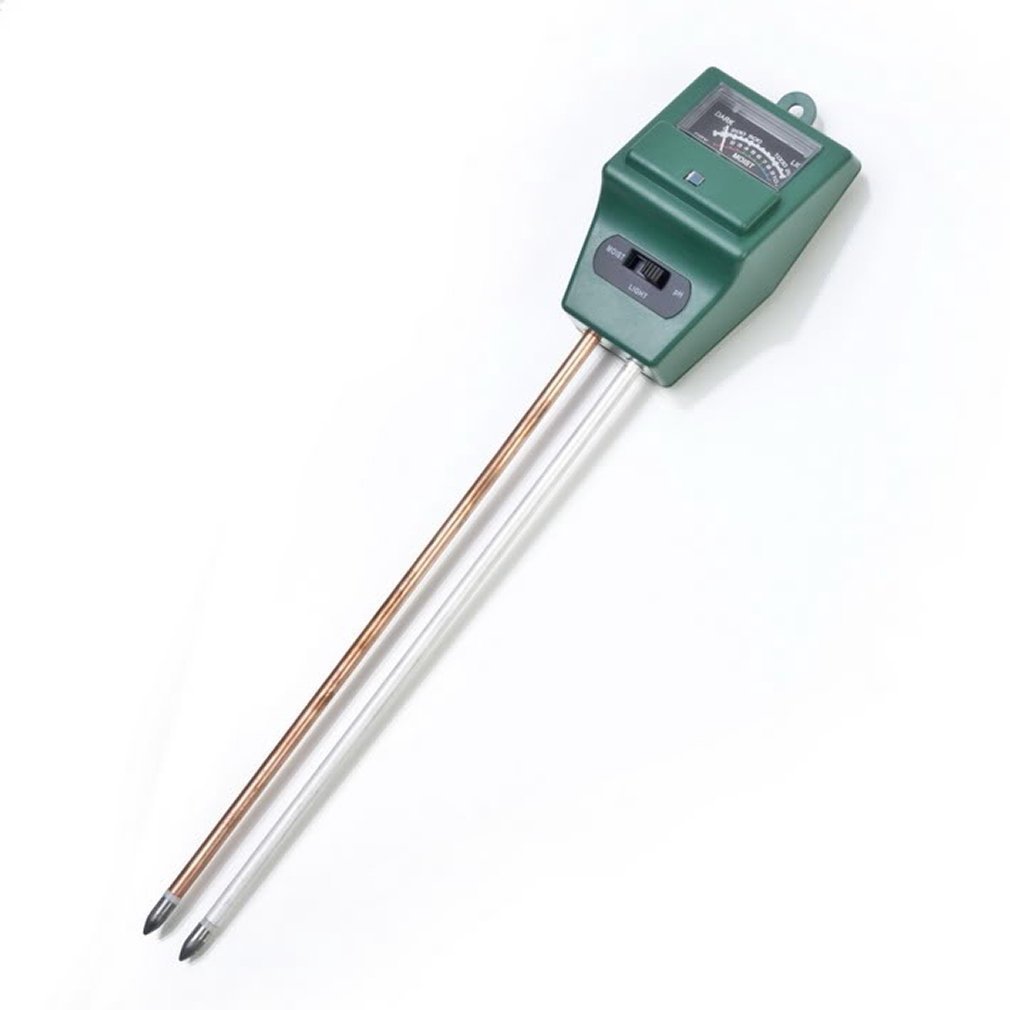
Source : Amazon
This 3-in-1 moisture, pH, and light meter with an easy-to-read scale could help you save time and money. You can ensure that your soil moisture and pH are kept at the proper levels by using this scientifically precise measuring water moisture testing instrument. You can also keep an eye on your plants to make sure they’re getting enough light.
This is three-in-one moisture, PH, and light meter. Sensor Suitable for all forms of agricultural soil farming solutions. Simply place the meter’s probe into the soil, change the setting to the one you wish to measure, and read the scale. There’s no need for a battery, and it’s quite easy to use. Assists you in maintaining proper balance. It is easy to use, it has the factor of sturdiness, it is worth the value for money and its Accuracy level is also very precise. The only drawbacks are it doesn’t come with a warranty and it is a bit bulky.
Sonkir Soil pH Meter, MS02 3-in-1 Soil Moisture/Light/pH Tester
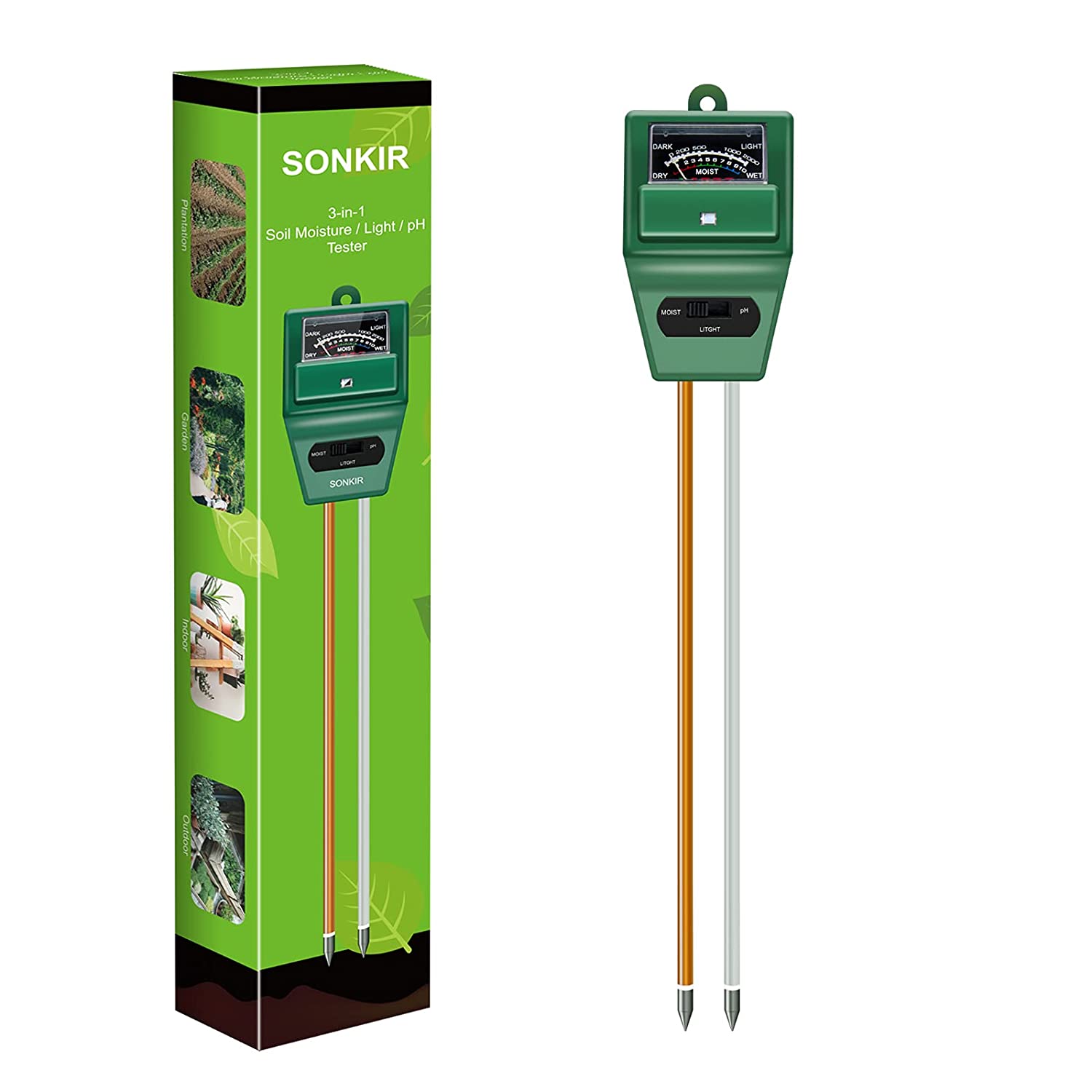
The use of Sonkir Soil pH Meter, MS02 3-in-1 Soil Moisture pH Tester is very straightforward. Push the rods into the soil to the roots and take the reading a few seconds later. The meter allows checking the soil moisture level, the amounts of light and the pH. You can switch between the 3 modes by pushing the button below the display. The moisture meter is pretty accurate. I would say this is a useful gadget for people with a lot of plants that are on different watering schedules or newbies who are still learning how to properly look after their plants.
Luster Leaf 1840 Rapitest Soil pH Meter
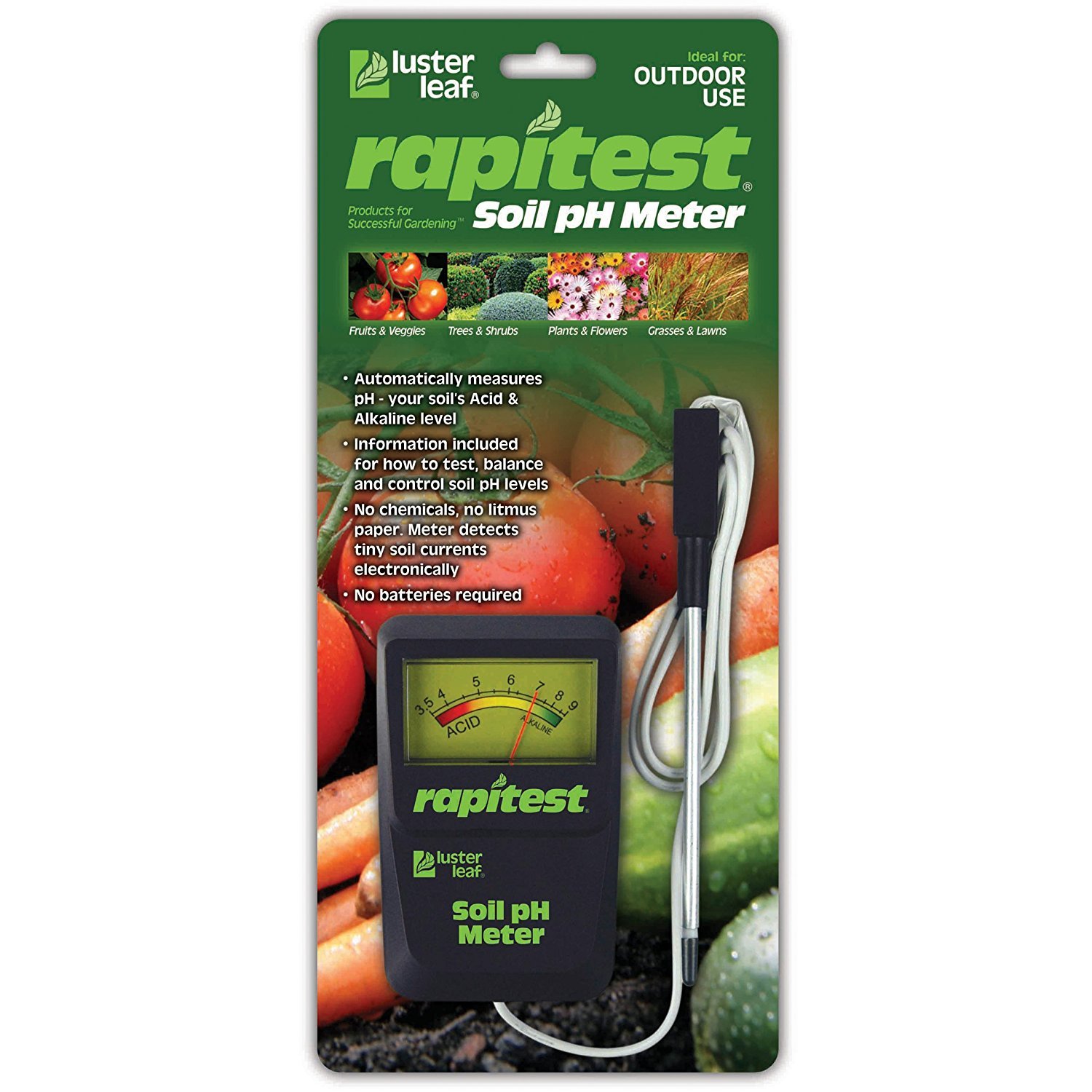
A one-of-a-kind corded probe allows for simple reading while measuring. Instructions for use are basic but comprehensive, and a cleaning pad is included. Fruits/vegetables, trees/shrubs, plants/flowers, and grasses/lawns are all good choices. For simple reading, a flexible corded probe and a big scale plate are used. To ensure the most accurate results, the logarithmic scale has been thoroughly calibrated. Based on your results, it includes information for both users and recommendations for how to alter soil pH and/or choose the right plants. Another bonus is the provided cleaning pad, which is necessary for appropriate cleaning in between uses. This makes Luster Leaf 1840 Rapitest Soil pH Meter the best soil pH tester.
EGOODZ Soil Tester 4 in 1 PH Meter
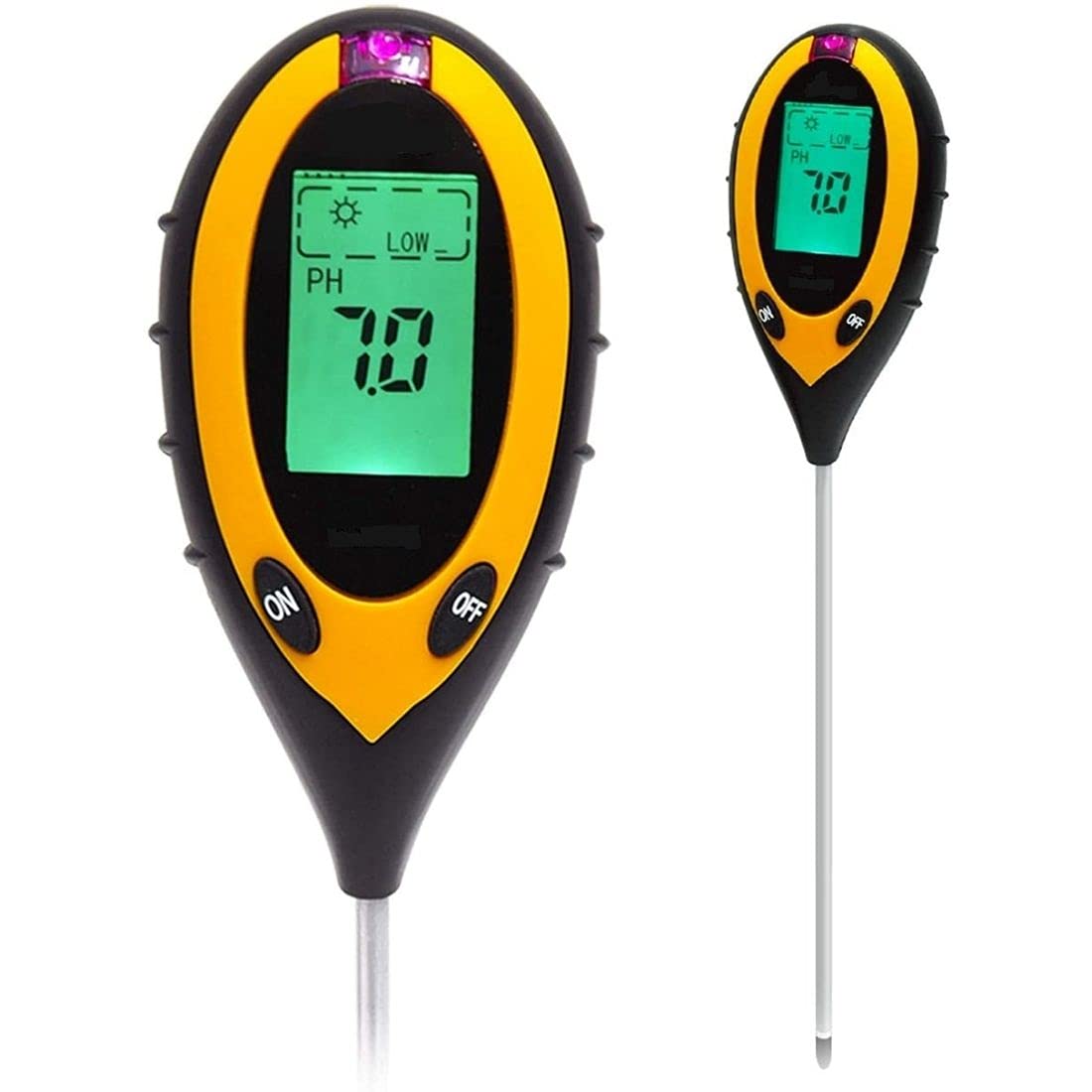
This digital soil ph meter 4 in 1 pH meter for soil testing moisture, pH, temperature, artificial and Light and PH Tester provides four vital measurements: pH-value, temperature, moisture, and sunlight intensity in the environment. The light sensor module window and sensitive 200mm probe give 5 units of accurate and precise measured findings, including pH, moisture, sunshine, °c, and °f. (soil & environment). It also boasts an enormous LCD with a crisp display, backlight, and auto power-off, in addition to the other features. This soil pH temperature meter is ideal for determining the growing conditions of both indoor and outdoor plants, as well as garden evanescence. The soil testing kit agriculture is a very useful one in lawn care to determine soil conditions in different areas of the garden and finding the correct grass seed.
FreshDcart Solar Soil Plant Care New 3 In 1
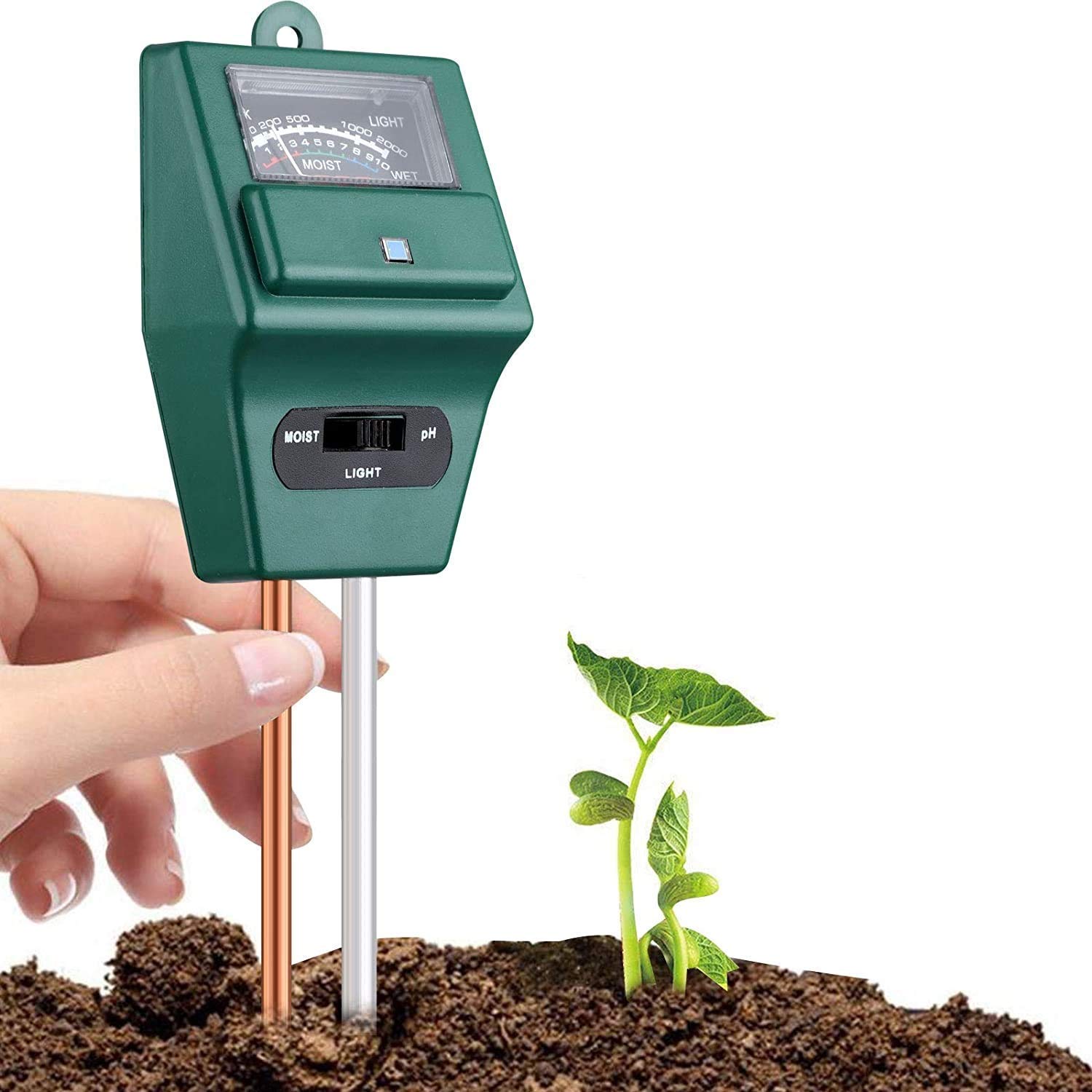
The FreshDcart Solar Soil Plant Care Sensor pH is a light meter with an easy-to-read scale that could help you save time and money. You can ensure that your soil moisture and pH are kept at the proper levels by using this scientifically precise measuring water moisture testing instrument. You can also keep an eye on your plants to make sure they’re getting enough light.
The sensor in the product is suitable for all forms of agricultural soil farming solutions. Simply place the meter’s probe into the soil, change the setting to the one you wish to measure, and read the scale. There’s no need for a battery, and it’s quite easy to use. Assists you in achieving the proper equilibrium. Not perfectly accurate due to the scale monitor but will get you the right values. A little on the plastic build but nodes are decent quality and will bear normal wear & tear.
Also, know the Top 10 Glucometers in India in 2021- Reviews and Comparison
How to Use a pH Meter to Test Soil pH?
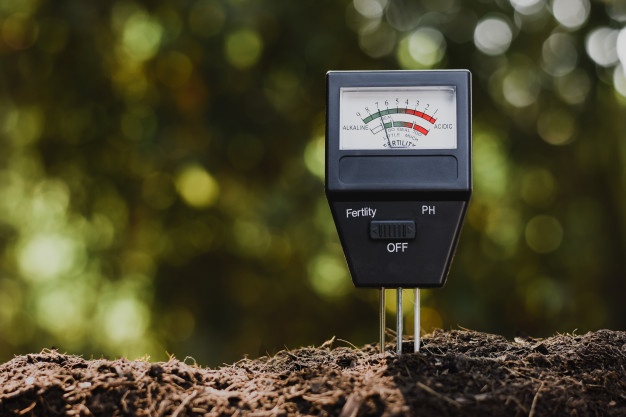
Every tester works in a unique way, yet they all have a lot in common. Because most of these meters use probes, a general procedure for using them can be found here. There are different types of spoil, in some soil, the growth of the plant is really good while in some soil it’s not so good. Sometimes even though we use fertilizers there is no effect on plant growth means even though nutrition is there in the soil still plant is not capable of extracting the nutrition from the soil. This all happens due to ph value of soil is out of the limit. The acidic factor of soil decides whether the plant could consume nutrition from soil or not.
The LCD display panel shows the value of the above-mentioned factors. There will be mostly two switches on every soil pH meter. The left switch is turn the device ON/OFF and the right switch changes the temperature from degree Celsius to degree Fahrenheit. Back switch is used to choose modes. Mode 1 means, LCD will display light intensity, moisture and temperature. Mode 2 means LCD will display light intensity and pH value of soil. Inside the upper part of the device, there will be light sensors and temperature sensors and the lower part consist electrode, which will invert in the soil to check pH value of soil and moisture. You have to buy a separate square 6-volt battery for this device. We connect the battery with the battery connector and close the battery compartment.
How to raise and lower the pH value of soil?
While checking the pH value of soil, make sure the soil is neither too dry nor too wet. To verify pH reading, measure three different readings at three different times in a day. A slight change in soil pH can also change the acidity and alkalinity of the soil. In winter bacterial activity in soil decreases, therefore the acidity of soil decreases. In summer bacterial activity in soil increases, therefore acidity of the soil increases. This is because, in summer, ingredients present in the soil become mobile and that produces a toxic effect. We can solve this problem by adding organic matter. Organic matter consist 7 pH value, therefore it works for both the acid and basic nature of the soil. In acidic soil the root development of plants is good.
Conclusion
It’s critical to have the right pH for your plants to flourish to their greatest potential. Testing the pH of the soil is a good place to start troubleshooting. This is applicable especially if you notice the leaves turning yellow or any other anomalies. To acquire the most accurate findings, utilize the best available soil pH meter, especially if the soil is being treated to correct the pH. Make sure you start with an accurate reading of the foundation if you’ve done treatments to elevate or drop pH. After then, test on a frequent basis to ensure you’re getting the appropriate results. This can help prevent over-correction, which can lead to additional issues.

